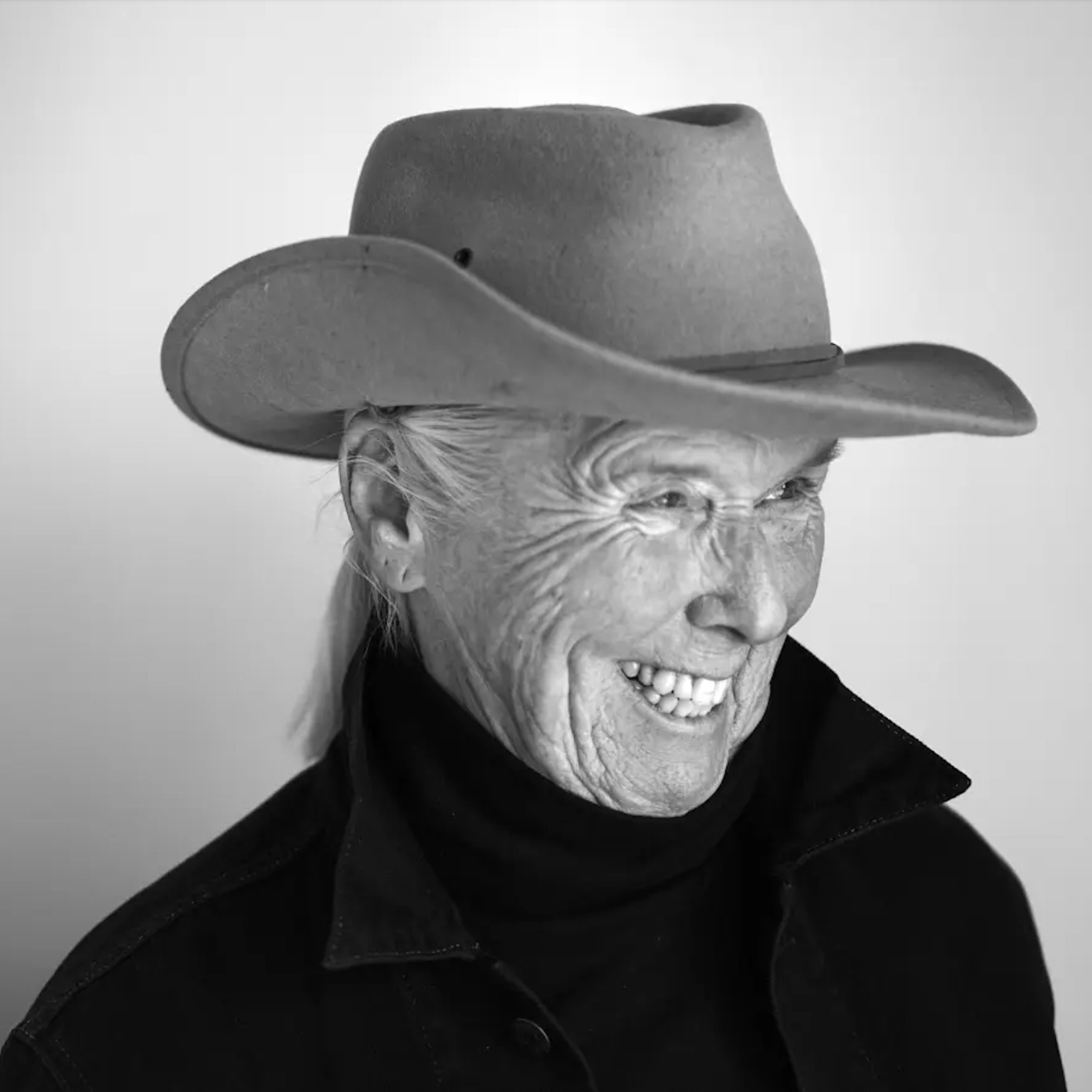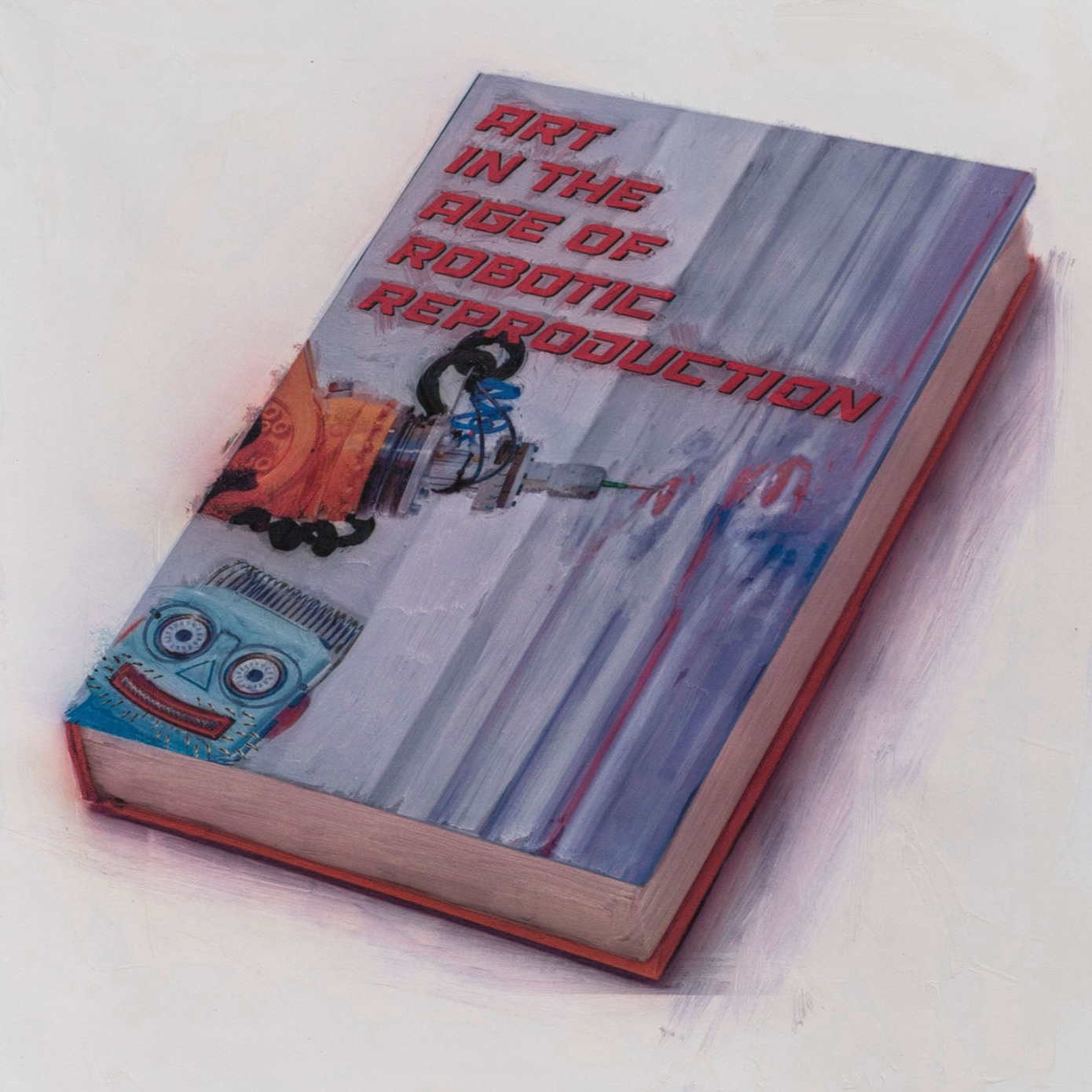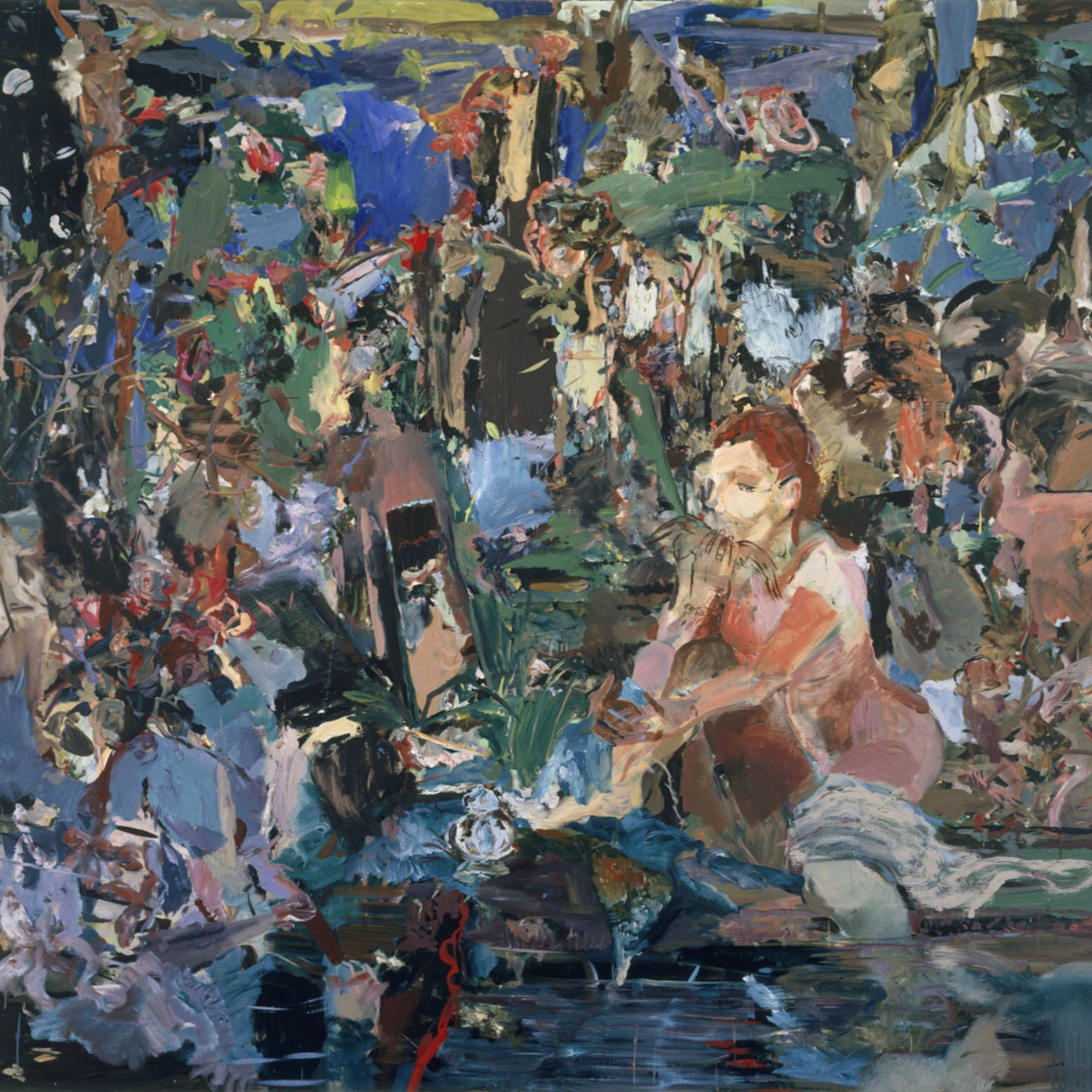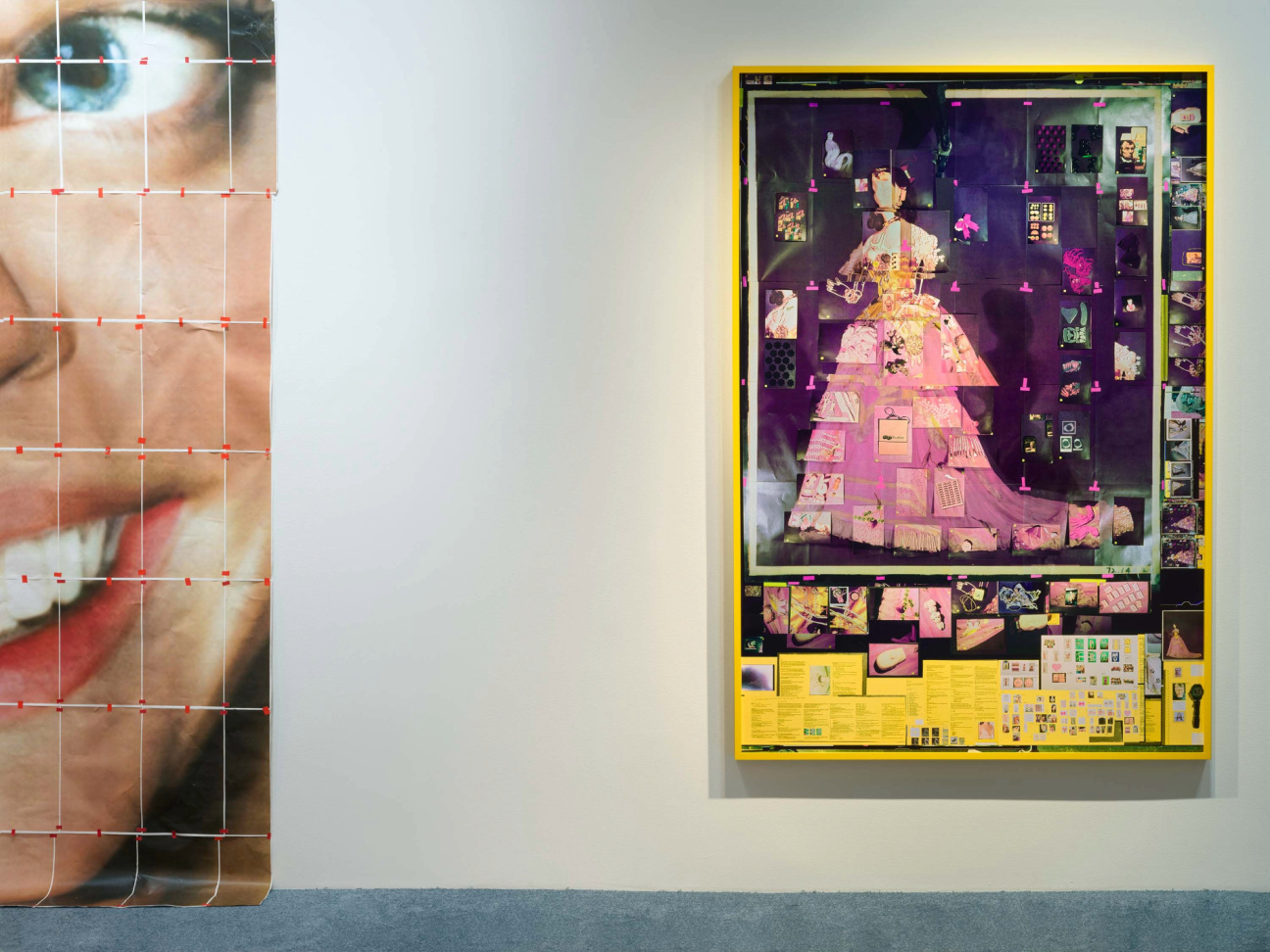
Welcome to Close Looks: a semi-regular column from our critics. This series of long-form reviews dives into buzzy and under-the-radar shows alike, revealing the trends, ideas, and controversies that shape what’s happening—and what’s to come—in the art world. For this installment, two striking moving-image works, now on view in New York, demand CULTURED’s Co-Chief Art Critic Johanna Fateman's queasy attention.
Steve McQueen through Summer 2025
Dia Chelsea | 537 West 22nd Street
Sara Cwynar through December 2024
52 Walker | 52 Walker Street
Two short films floored me—sickened me, even—in different ways last week. Each is the crescendo of an impressive solo exhibition. Steve McQueen’s Sunshine State, 2022, is the main event of a terse career-spanning show featuring just three works at Dia Chelsea, and Sara Cwynar’s tour de force Baby Blue Benzo, 2024, titles her extravagantly makeshift, heady environment at 52 Walker. While the artists’ video installations diverge dramatically in tone and subject matter, they have enough in common to buzz in my thoughts as parallel preoccupations. Both continuously fold the past into a dreamlike present, using found and manipulated historical material; both use voiceover to unsettling, hypnotic effect; and both are shown as monumental, panoramic projections. Most notably, they share a structural precision, a loyalty to their chosen formal conceits, that’s dazzling and draining to witness.
McQueen, never easy on viewers, this time asks nothing less of us than to stare into the sun. The bitterly titled Sunshine State, 2022—which is, as those familiar with the artist’s sensibility might guess, not a smiling advertisement for Florida—opens with two views of our fiery star from outer space. (The two-channel work is shown on adjoining screens that bisect the cavernous gallery, so the film can be watched from either side.) The double image works as a kind of existential establishing shot: The terrifying molten sphere, which fuels life on earth, sets the stage for a story of near-death, told in the artist’s own voice.
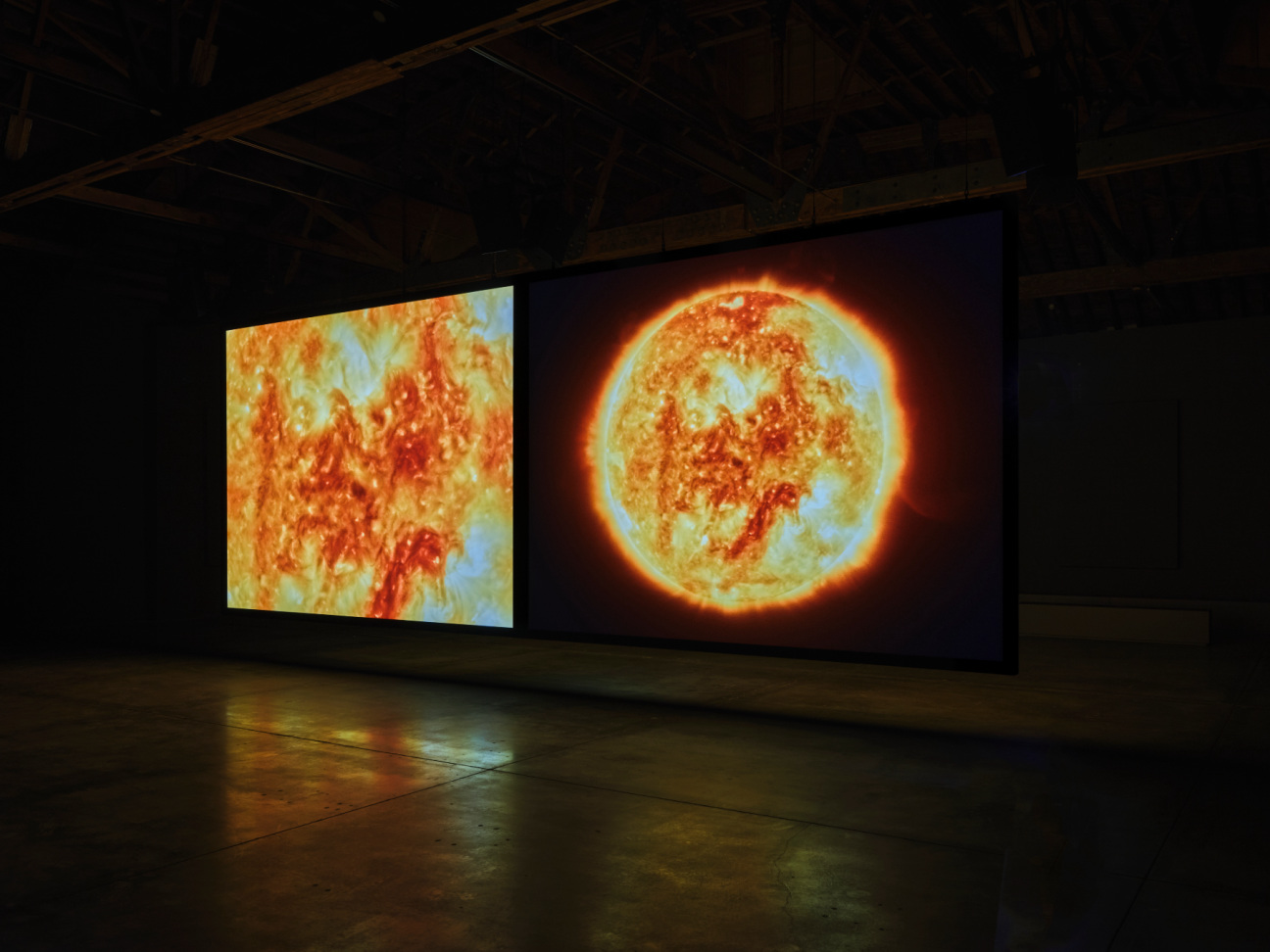
The show coincides with other major projects by the Oscar- and Turner Prize-winning artist-filmmaker—Bass, 2024, an immersive, abstract work in sound and light currently fills a 30,000-square-foot gallery at Dia Beacon, and McQueen’s new feature Blitz, a WWII drama set in London, opens in theaters on Nov. 1. But of these events, the presentation of Sunshine State seems particularly well-timed this fall, in the United States. It is an excruciatingly personal work that speaks to the long, inherited half-life of trauma.
It is more than that, too: As the British McQueen recounts his immigrant father’s experience as a worker who traveled from the West Indies to Florida to pick oranges, we are reminded—by the film’s pointed title—of the symbolic significance of the troubled and troubling place. The Sunshine State is home to the seat of would-be authoritarian power at Mar-a-Lago and a metastasizing hotspot of the right-wing culture war, where, among other travesties, the discussion of “critical race theory” is banned from public schools.
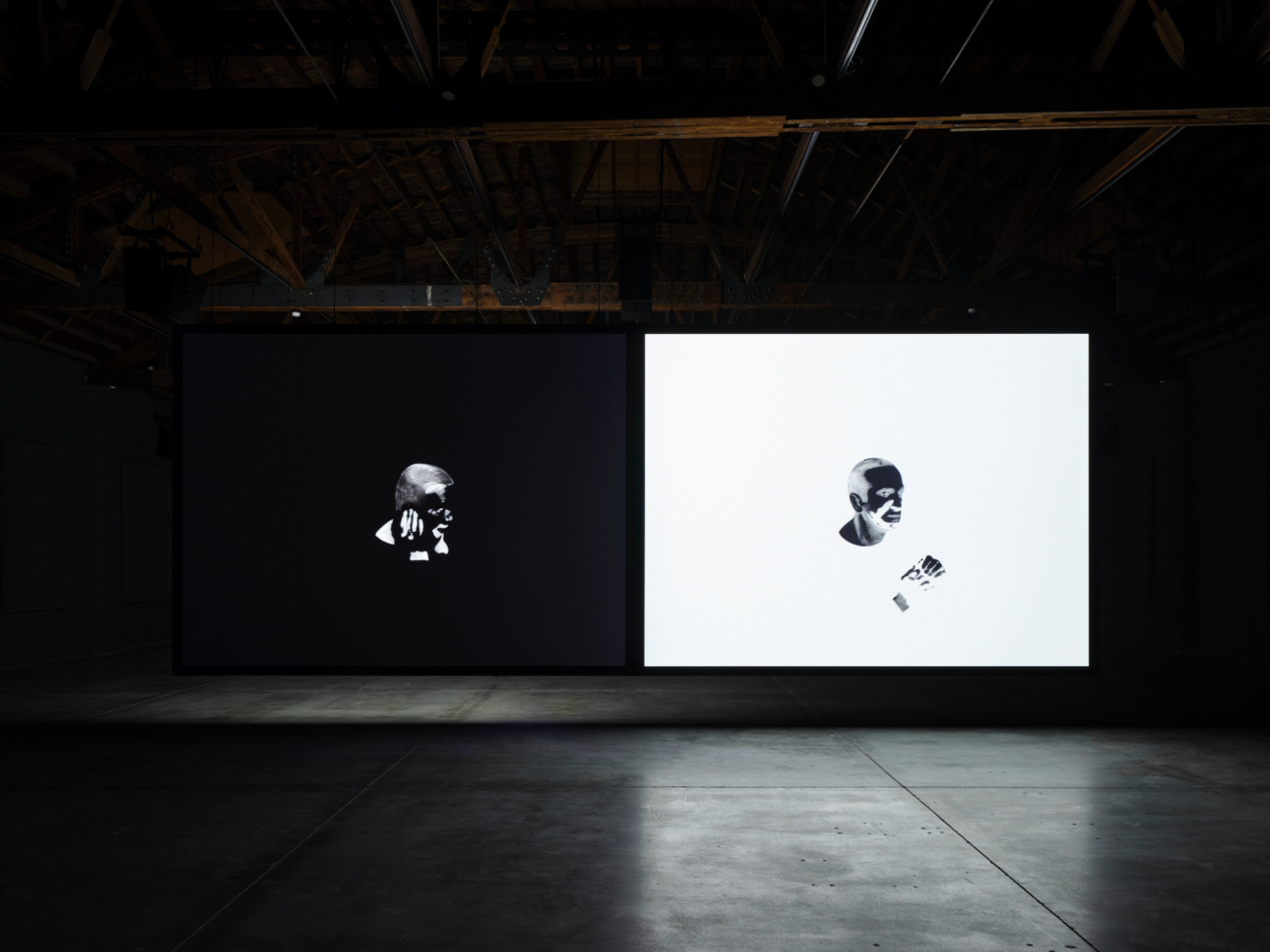
The roiling orange expanse of the sun, accompanied by an incantatory preamble, is the sole instance of color in an otherwise black-and-white film. The remainder is composed of altered footage from The Jazz Singer, 1927, whose plot concerns the dilemma of the Jewish character Jakie Rabinowitz (played by Al Jolson). Raised by his rabbi father to become a cantor, Jakie instead finds his true calling in musical theater—performing in blackface. The latent violence of minstrelsy becomes the visual substrate for McQueen’s monologue, but in the filmmaker's repurposing of the footage, Jolson’s application of blackface makeup is a subtractive gesture. It makes him invisible rather than dark. As a scene from The Jazz Singer, shown in the negative, plays forward on one screen, and a positive version runs backwards on the other, McQueen tells of his father’s narrow escape from vigilante executioners in the Jim Crow South.
In a dreadful loop, with his script disintegrating, or becoming increasingly abbreviated into impressionistic shorthand with each cycle, the artist describes, four times, the night that Philbert McQueen leaves the workers’ camp with two other men to drink at a bar. Insulted and refused service at the whites-only establishment, one of the three cracks a bottle over the bartender’s head. They flee, hunted by dogs. Eventually, Philbert, hiding frozen in terror, hears the two gunshots sounding the murder of his companions. Perilously hyper-visible in the bar, his father survives by disappearing into darkness.
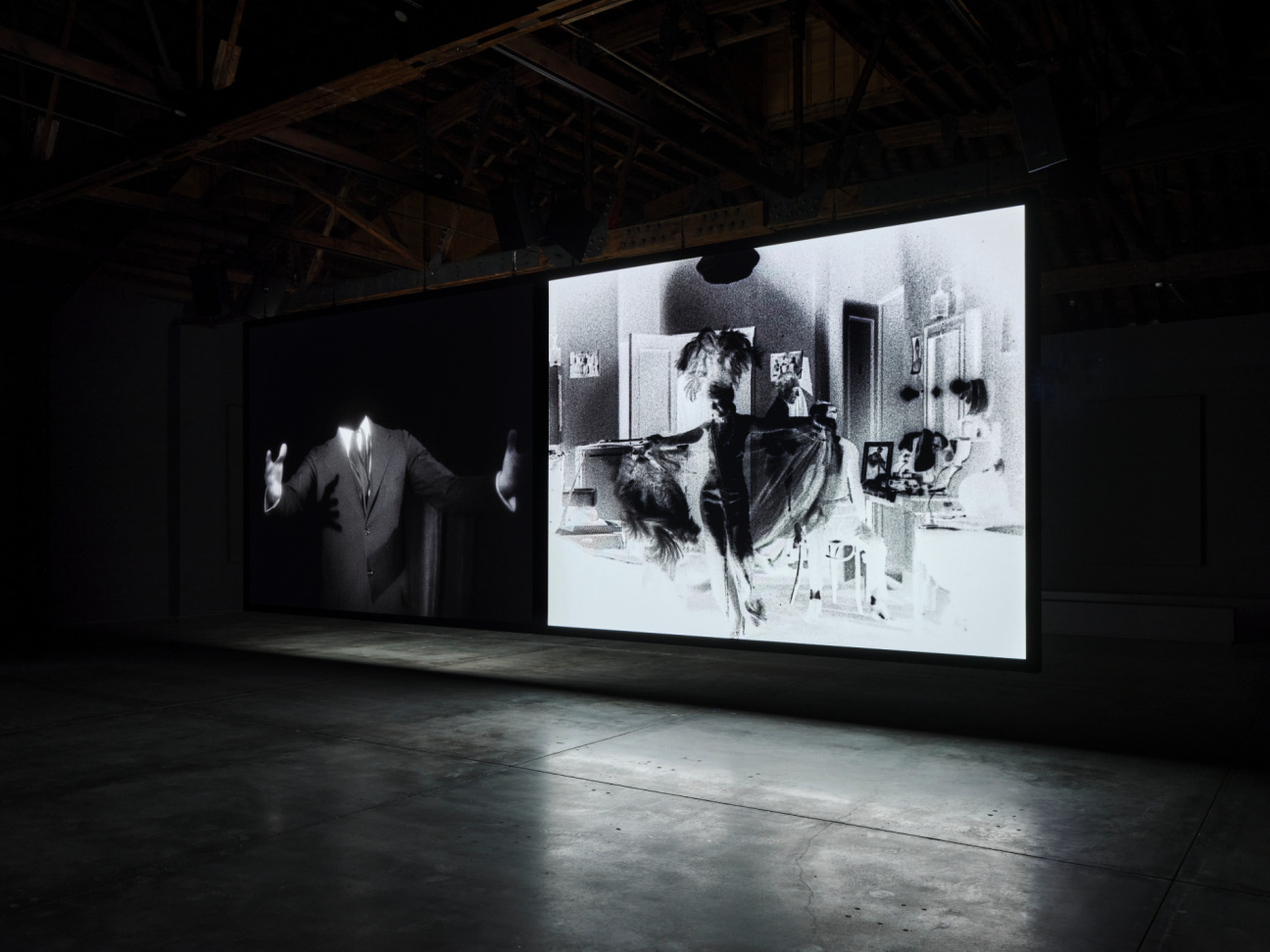
Sunshine State delivers its gut punch more than once, and its baseline emotional intensity—the artist’s urgent intimacy—is unrelenting. In contrast, the appealing, arc-less fugue of Baby Blue Benzo administers unease gradually, coaxing viewers into an unwitting state of overdose. Approaching the end of the film’s 21-minute runtime, the off-gassing of new (blue) wall-to-wall carpeting, which blankets the expansive space of 52 Walker for Cwynar’s show, began to hurt my head and close my throat. The artist, who has long traded in a deconstructive strain of barbed and sutured beauty, outdoes herself with her intoxicating, toxic achievement here.
Photographic works relating to the film hang in the passageway leading to the exhibition’s screening room (a temporary, unfinished dry-wall chamber). The first print viewers encounter, Pam, Plastic, 2024, appears to be derived from the artist’s photo and video shoot of Pamela Anderson, which accompanied a New York Times profile of the actor last year. Posing against a backdrop of rumpled blue paper, wearing a white T-shirt and a slung-on dress of rhinestones and tulle, her figure partially obscured by a screen of bunched-up plastic wrapping paper, she seems stuck at a threshold between realms. Anderson halfway belongs to Cwynar’s world of craft materials, cutouts, shiny things, and consumerist make-believe.
Reality (of a sort) intrudes in foreboding pieces such as the Encyclopedia Grid (Weather), 2024, which compiles snapshots of clouds and wildfire, like evidence, against a slick red ground. An index finger enters the frame of each picture as if to prove a point—about climate catastrophe, perhaps. In this still-image run-up to Baby Blue Benzo, the artist sketches her obsessive lexicon and gestures toward the mysterious methodology undergirding her work.
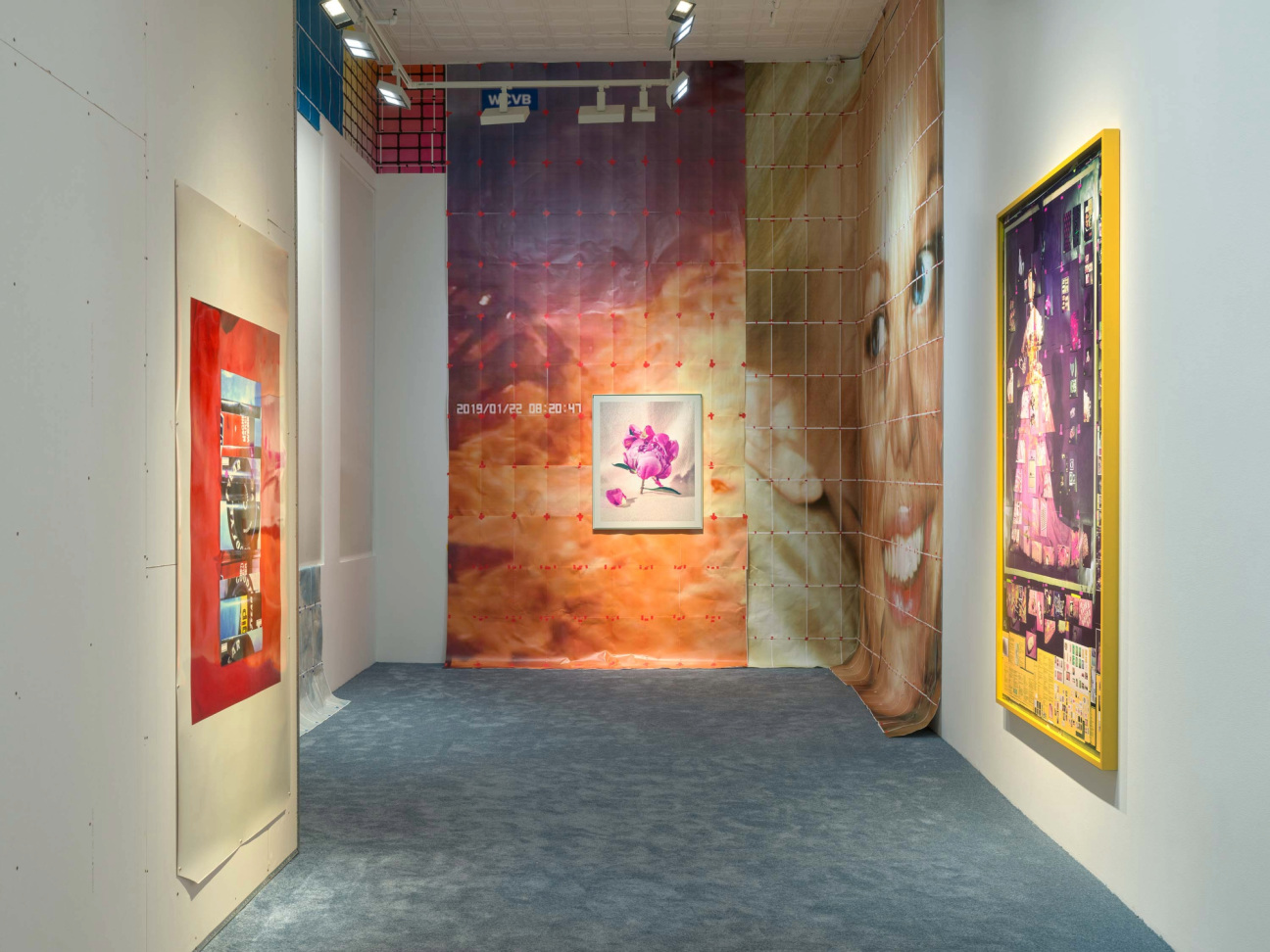
Like the benzodiazepine class of drugs referenced by its title, the film’s defining mode is dissociative, following an insomniac’s drifting illogic. (The artist has said she is afflicted by sleeplessness.) “Benzo” here also alludes to the 1955 Mercedes-Benz 300 SLR, the most expensive auto ever sold at auction, which figures prominently in the work as a replica and in reproductions, crystallizing Cwynar’s theme of delusional aspiration.
Organized around two opulently staged scenes featuring models (sometimes wearing historical costumes in gorgeous, sartorial non-sequiturs), shot in a studio on circular camera tracks, her production veers—in look—between the excesses of a sky’s-the-limit fashion editorial and a budgetless, DIY digital composition. Cwynar updates the approach of her feminist Pictures Generation forebears; in her crowded montage, I see Sarah Charlesworth’s isolated, sepulchral luxury objects multiplied, subjected to a contemporary feminine or feminized binge aesthetic for the era of mindless scrolling.
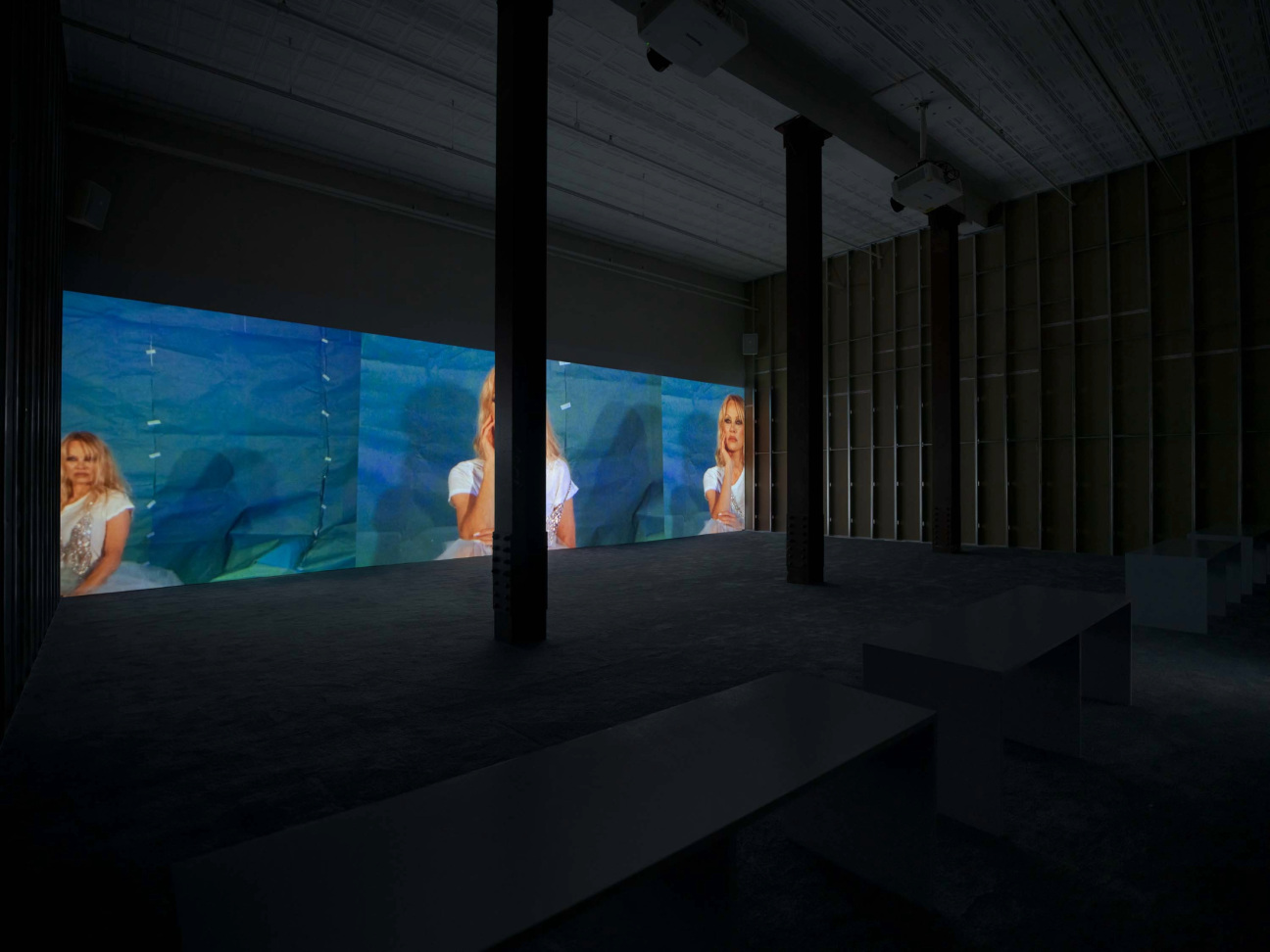
Materials from Cwynar’s personal archive mix with stock footage. A Detroit auto workers’ strike, the Manhattan Bridge, and Los Angeles superblooms form a rich visual matrix for the film’s “story”—or the string of entrancing intonements—narrated by a male and a female voice (Cwyar’s own). The two take turns and overlap in inspired passages like, “I am a 1980s ice-skater. You are a caller on a giant phone. You are Pamela Anderson. You actually are Pamela Anderson.”
Baby Blue Benzo takes an unusual form. Thanks to an elegant animation technique, it seems to progress as a slender strip, moving forward (and sliding back) as though on a track, recalling the Fordist assembly lines and home gym treadmills that make fleeting appearances in its dense sequences. This linear motif is at odds with circling camerawork and the going-nowhere, hypnagogic narrative, yet somehow, this deceptive sense of progress leaves the strongest visual impression. It is, in part, this horizontality, this left-to-rightness that connects it to McQueen’s two-channel Sunshine State. The films both want to be “read” as well as watched, it seems. They move your eye across the screen, and their haunting scripts could easily exist independently from their images.
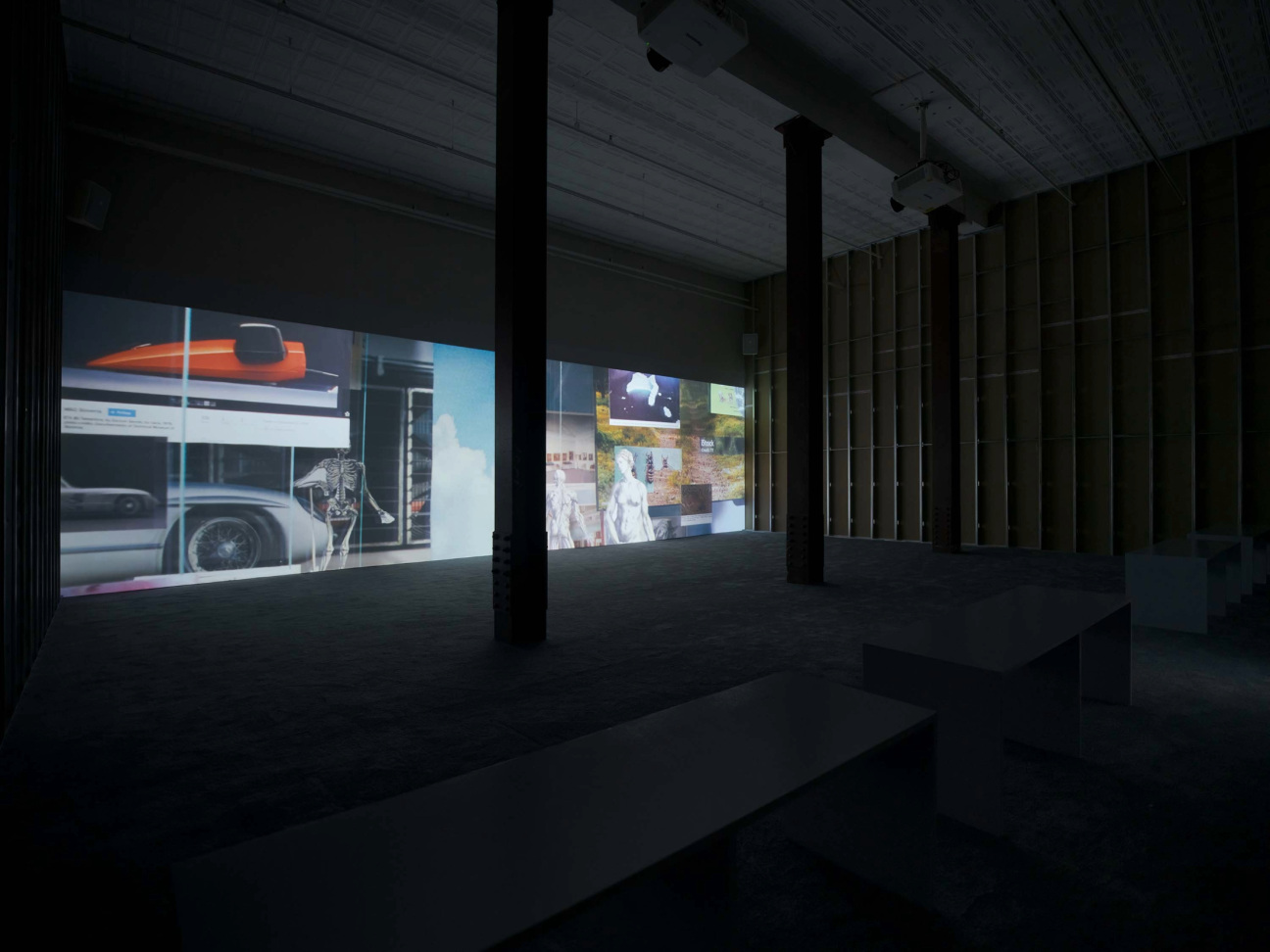
Though neither film is long, both demand endurance. Cwynar delivers pretty and sexy things to the point of monotony, but once under Baby Blue Benzo's spell, you forget it's an option to turn away. McQueen, of course, threatens to burn your eyes, dares you to leave from the first moment. The transfixing force of his challenge makes you stay.

